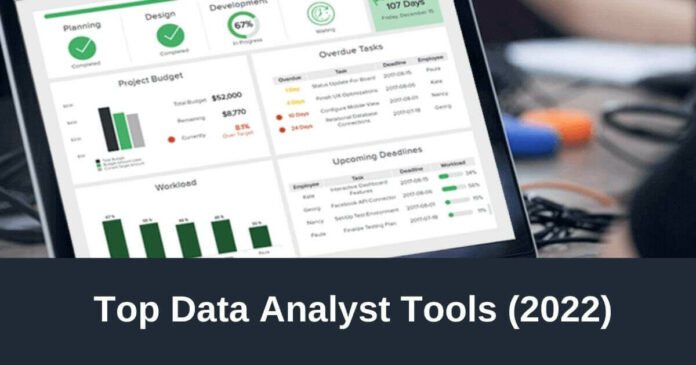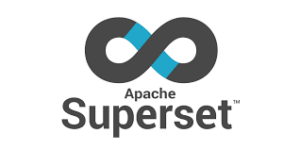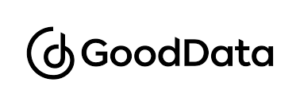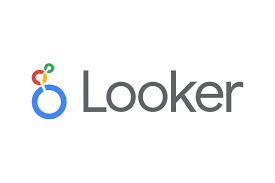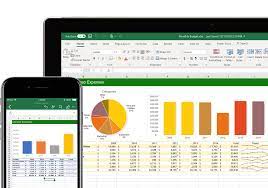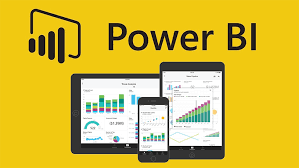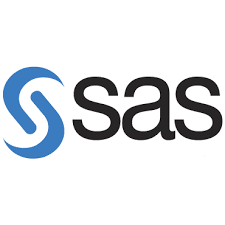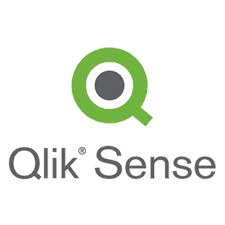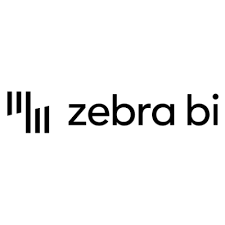Best and demanding data analysis tools will be discussed in this article. Finding, collecting, and presenting data in one location is made simpler by data analysis tools. By analysing trends, extrapolating data from other sources, and making future projections, they can also make hidden insights visible.
Today, data is an essential part of every business decision or operation. Data is generated and stored in sizable systems known as databases with each click. Raw data is useless by itself and only exists to provide entertainment. However, data that has been evaluated can be persuasive in seeing trends and making wise choices that might greatly expand a corporation. Every organisation that wants to succeed in the commercial sector must conduct data analysis.
Data analysis is the process of examining data collections to discover relevant information. Then, using visualisation tools, this information is presented in a way that decision-makers can easily comprehend. Numerous industries, including those in transportation, healthcare, education, marketing, logistics, and online retail, can benefit from data analysis. It entails a number of procedures, including data gathering and storage, data cleansing, accurate data analysis, visualisation, and result interpretation.
A variety of tools can be used for data analysis and visualisation. To ensure optimal efficiency and functionality, a data analysis tool needs to have these five crucial components.
Top 10 Best Data Analysis Tools In 2022
Top 10 Best Data Analysis Tools are explained here.
1. Demo or free trial
The trial version of a solid data analysis tool should be available, often for 30 days. Organizations will be able to determine their compatibility with the tool and the best strategy to work with before committing and paying for it thanks to this. Due to the fact that the data analysis company only shows the tool and its functionality during a demo, it differs slightly from a trial.
2. Data Security
The database and database management system of the business are frequently connected with data analysis tools (DBMS). This implies that without adequate protection, employees at any level may have access to confidential client information and corporate data. A smart data analytics platform establishes safeguards, permissions, and access level controls that prevent data breaches. Nevertheless, the ability of users to interact with the given data should not be hampered by data security. This is another data analysis tools. Also check importance of a business plan
3. Data integration
Before choosing any analytical tool, one must take into account data integration as a crucial component. Databases and other data of storage may be dispersed among an organization’s many locations. Such data should be easily importable and integrable with the aid of a decent tool. Connecting analytical tools to data sources should take only a brief amount of time for data scientists.
4. Data Visualization
Most data analysis methods end with data visualisation. The ability to share and convey findings with team members and executives is a requirement for data scientists and data analysts. Data visualisation techniques, such as graphs and charts, that make it simple to analyse and communicate data must therefore be included in data analysis tools.
5. Dashboards and ease of use
Your firm should use data analysis tools with user-friendly and engaging dashboard designs. Whether or whether the user is familiar with programming languages, they should also be simple to use. The ability to read information on mobile devices is also advantageous. This is another data analysis tools.
2022’s top 10 data analysis tools
The global business analytics market, according to Allied Market Research, was estimated to be worth $61.10 billion in 2020 and may reach $177 billion by the end of this decade. Consequently. The best data analysis tool can be chosen from a variety of options. Here is a list of the top substitutes available right now, listed alphabetically.
1. Apache Superset
Overview: Apache Superset is a cutting-edge tool for data exploration and visualisation. It is a huge data handling open-source software application tool.
Important characteristics: Apache Superset’s main characteristics are as follows:
- Demo/free trial: Apache Superset is an utility that is available to all users for free and open source.
- Security: Superset offers a security mechanism that allows various users to be granted different levels of access to data.
- Data integration: Apache Superset may connect to and incorporate data from any database or data source that uses structured query language (SQL).
- Rich visualisation models for data are available from Superset in a variety of forms. You can create unique visuals and then import them into Superset using the visualisation plug-in.
- Dashboards and user-friendliness: Apache Superset has dynamic dashboards that make it simple to examine and access data.
USP: Apache Superset is an open-source software programme that is adaptable to the needs of a corporation. It is one of the few large data analysis tools currently on the market.
Editorial observations: Businesses can use Apache Superset, a free tool, to explore and visualise data. It does not, however, support NoSQL databases.
2. GoodData
Overview: The software provider GoodData, situated in the United States, offers infrastructure for data analysis. Over 30 000 enterprises are currently served by the company, which was founded in 2007.
Important characteristics: Among GoodData’s salient characteristics are:
- Demo/free trial: The service offers both free and paid options. For the paid plans, there is a demo version available upon request and a 30-day free trial.
- Security: All GoodData plans provide standard protection, while the enterprise plan adds enhanced enterprise security.
- Data integration: Among other sources, GoodData integrates with databases, data warehouses, and manually submitted CSV files.
- Data visualisation: With GoodData, you can simply share reports with others and build charts to showcase data.
- Dashboards and user-friendliness: GoodData analytics is well-suited to a variety of devices.
USP: Dashboards with options for coding and without coding can be embedded using the GoodData analytics platform. This is another data analysis tools. Also check keyword research tools
For software as a service (SaaS) systems to deliver insights and graphics directly to the end users, GoodData embedded analytics is a crucial tool. For beginners, it could be difficult to utilise.
3. Looker
Overview: Looker, a recent acquisition, is a business intelligence, data visualisation, and data analysis application that is now a part of the Google Cloud platform. It was launched and released in 2012, but in 2019 it was acquired by Google.
Important characteristics: The main attributes of Looker are as follows:
- Demo/free trial: Upon request, Looker offers a demo version. They also encourage risk-free experiments.
- Security: Enterprise-class security is available with Looker. This implies that you can regulate and restrict user-level access to data.
- Data integration: More than 60 SQL data sources, such as Oracle and Google Big Query, are included in data integration. You can access the database and insert SQL using Looker.
- Data visualisation: Data visualisation can be used in a variety of ways. In addition to pre-made templates, you can create unique visuals.
- Dashboards and user-friendliness: Looker offers a dynamic, interactive dashboard that enables in-depth data analysis.
USP: Looker offers consumers embedded analytics, accelerating the development of data-driven applications. This is another data analysis tools.
Editorial observations: A cloud-based data analysis tool called Looker can give medium- to large-sized businesses what they require for data analysis. Looker can only work with SQL databases, though.
4. Microsoft Excel
Overview: As part of the Microsoft Office software family, Microsoft developed Excel, a pioneering spreadsheet application programme. It can be used to calculate and visualise data. This is another data analysis tools.
Important characteristics: Excel’s salient attributes include:
- Demo/free trial: Microsoft Excel offers a one-month trial period for both personal and professional use. The Microsoft 365 package includes the trial.
- Security: Microsoft 365 provides all-inclusive protection for client and staff data. Data security is provided on all fronts with the Business Premium subscription.
- Data integration: By connecting to Power BI, you may combine data from that platform with that from Azure and databases.
- Data visualisation: You may make charts and graphs in Excel to better comprehend data. It’s also simple to share.
- Dashboards and user-friendliness: Excel is a user-friendly programme with mobile, desktop, and web versions available, but it is deficient in fully functional dashboards.
USP: Excel’s ability to directly integrate analogue data from an image to an entirely editable format makes it unique.
Editorial observations: For the majority of businesses, Microsoft Excel is a very effective tool for processing and doing computations on data. However, Excel is an outdated programme with few tools for dashboards and infographics.
5. Power BI
Overview: Microsoft owns the business intelligence and data visualisation programme known as Power BI. Together, the Power BI tools translate raw data into a legible format that is simple to comprehend.
Important characteristics: Power BI’s main attributes are as follows:
- Demo/free trial: Power BI offers a 60-day personal free trial to try out the various tools.
- Security: Using sensitive labels or the Bring Your Own Key option, Power BI secures your data on various levels.
- Data integration: Excel, Microsoft Azure, databases, and other sources of data may all be seamlessly integrated into Power BI.
- Data visualisation: Power BI allows you to develop and distribute interactive data visualisations all over the world.
Power BI is simple to use and has dashboards. Reports and dashboards are seen using the mobile app, which is accessible on iOS and Android. This is another data analysis tools.
USP: Because Power BI is a product of Microsoft, it works well with that company’s highly regarded data analysis software, Microsoft Excel. Additionally, it is quite expandable.
Editorial observations: Microsoft’s Power BI has established itself as a potent tool for data analysis. However, the Microsoft environment is where its best features can be found, which can restrict usage.
6. SAS Business Intelligence
This is another data analysis tools. Overview: A statistical software package used to handle and carry out in-depth data analysis is called Statistical Analysis System (SAS). This data analysis tool was introduced more than 50 years ago and is still widely used today.
Important characteristics: The main attributes of SAS Business Intelligence are as follows:
- Demo/free trial: SAS provides 30-day on average free trials and demo versions.
- Security: The GDPR-compliant SAS software protection framework is designed to use best practises for data security and privacy.
- Data integration: When it comes to gathering data and exchanging insights, SAS is effectively integrated with other programmes and databases.
- Data visualisation: SAS enables you to produce eye-catching visualisations that facilitate quick comprehension of a data set.
- Dashboards and user-friendliness: SAS’s drag-and-drop functionality and mobile versions make it simple for anyone to use.
SAS is an all-inclusive programme that may be used for data analysis, from fundamental statistics to complex data analysis.
Editorial remarks: SAS is a fantastic data analysis and business intelligence application that provides the most capabilities and is simple to use for all user roles. The cost, though, might put off small enterprises.
7. Tableau
Overview: Mid-sized to big enterprises employ Tableau, an integrated business intelligence, data analytics, and visualisation tool. It was a 2003 startup with a U.S. base that Salesforce eventually purchased in 2019. This is another data analysis tools. Also check benefits of Vpn
Important characteristics: Tableau’s main attributes are as follows:
- Demo/free trial: Tableau offers a 14-day free trial version that enables you to examine the software’s primary features.
- Protection: Enterprise-grade security surrounds Tableau, preventing data from ever falling into the wrong hands, even when scaling.
- Data blending and integration: Tableau skillfully combines and integrates data from various sources, producing a single location for all of your company’s data.
- Data visualisation: Tableau claims the best report generating and visualisation tools, both of which are simple to publish on the Tableau server.
- Dashboards and ease of use: Tableau is built with a highly dynamic interface to accommodate users of all skill levels.
USP: A variety of Tableau features encourage data integration from all sources.
Editorial remarks: Tableau is a product that is highly recommended, with many capabilities and an easy-to-understand pricing structure. However, it has reportedly received poor consumer reviews and might be challenging for new users.
8. Qlik Sense
Overview: Qlik, a global software business with a U.S. headquarters, created the data analysis tool Qlik Sense. Qlik has more than 38,000 clients and is renowned for its work in analysis and business intelligence.
Important characteristics: The main attributes of Qlik Sense are:
- Demo/free trial: Qlik Sense offers a 30-day free trial that simply needs a Qlik account. The business trial may be extended for an additional 15 days.
- Security: Qlik Sense boasts of several security features as a role-based security model, report-level access control, multi-factor authentication, etc.
- Data integration: Qlik Sense offers complete support for integrating data from enterprise applications, databases, files, and cloud services.
- Data visualisation: Qlik’s data visualisation is automatic and intelligent, updating itself in accordance with the current situation.
- Dashboards and user-friendliness: Qlik Sense features a robust, interactive dashboard that enables you to rapidly identify essential information. This is another data analysis tools.
USP: Qlik Sense takes pride in going beyond query-based analytics by enabling data exploration in the absence of a specified query.
Editorial observations: A highly advanced data analysis tool with excellent data integration and interactive features is Qlik Sense. But the software’s mobile versions still require improvement.
9. KNIME
This is another data analysis tools. Overview: An open-source platform for integrating, analysing, and reporting data is the Konstanz Information Miner (KNIME). It has been extensively employed in pharmacological research since its initial release in 2006.
Important characteristics: The main characteristics of KNIME include:
- Free demo/trial: KNIME software is easily accessible and can be used without charge.
- Security: To keep the software safe for users, KNIME adheres to a strict code of software engineering. The business uses the software to test its security compliance policy.
- Data integration: Because the programme is open-source, all data data and data sources can be integrated.
- Data visualisation: KNIME provides a variety of tools for data visualisation.
- Dashboards and ease of use: KNIME’s graphical interface is designed so that creating prediction models or analyses does not require knowledge of programming languages.
USP: KNIME is an open-source tool that enables you to modify the programme to meet your organization’s objectives.
Editorial observations: KNIME is a useful tool that is openly designed, free to use, and adaptable. However, there is a dearth of educational resources and a demand for improved visualisation.
10. Zebra BI
Overview: Zebra BI is an add-on programme that enhances Microsoft Excel and Power BI’s data reporting and visualisation capabilities by including a number of useful features. The Slovenian software startup helps 2400+ organisations enhance their operations and existing features. This is another data analysis tools.
Important characteristics: Zebra BI’s salient attributes are as follows:
- Demo/free trial: Zebra BI is available in both a free and paid edition. A 30-day trial is also available for the pro version.
- Security: Because Zebra BI was designed to integrate with Microsoft, it completely relies on Microsoft security guidelines.
Zebra BI was designed to interface with Excel and can be quickly imported into it for use right away.
- Zebra BI’s amazing visualisations for data visualisation help put the data in the right context. To produce superior reports, it makes advantage of sophisticated variance charts, difference highlights, etc.
- Dashboards and user-friendliness: Zebra BI is simple to use and doesn’t call for any training or prior programming experience.
USP: Zebra BI graphics, regardless of data science skills, can automatically calculate and show data, making report building faster than ever.
Editorial observations: With a free version, Zebra BI is a robust data visualisation tool that is simple to use. However, because it essentially functions as a Microsoft solution add-on, its use is restricted.
